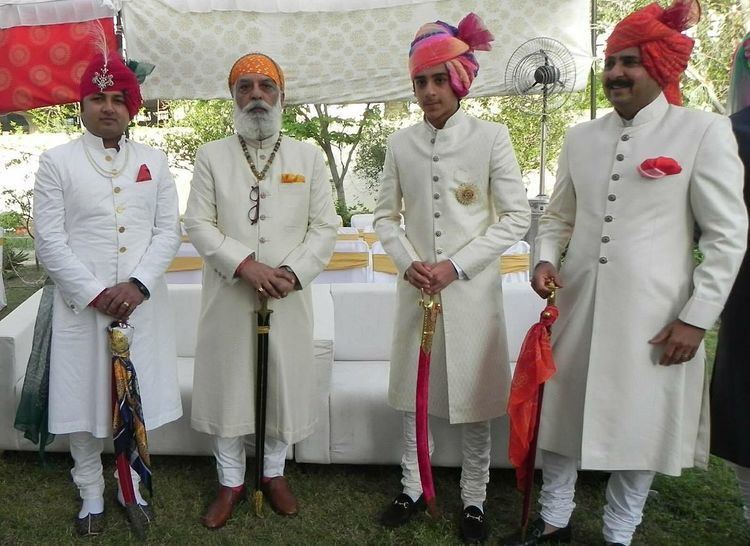 | ||
Rajputs traditionally have their own distinct individual rituals of marriage. Marriage is considered one of the most important events in a couple's lives.
Contents
Seven lifes
It is a relationship which is created for seven lifes between the two families of the bride and the groom. It comprises a ceremony for the Tilak (engagement), the Ban (starting of the wedding ceremony), the Mel (the community feast), the Nikasi (the departure of the Bridegroom party for the wedding), the Sehla, and the Dhukav (reception of the wedding party at the bride's place by her parents). Solemnisation of the wedding is referred to as Fera.
Bridegroom
A unique Rajput sherwani also known as Achkan is normally worn by the bridegroom along with his own family form of a turban. He keeps a sword in his left hand during the ceremony.
Bride
A bride wears a Lahanga, Odhani, Kurti or Poshak. The ornaments worn by a Rajput Bride are the Rakhdi on her forehead, the Sheesphul as headgear, the aad as a thick neck hanging, the Baju above her elbow (on arms), the "poonchis" and "bangdis" as thick golden bangles in arms, "hathfools" on hands and the Pajeb as anklets.
The wedding dress and the "aad" is gifted by the groom's side to the bride. The barat at the time of "samela" presents them in the "padla" ( a collection of many lahanga, jewelry items, accessories, make-up kits, shoes etc.) for the bride.
